Essential Equipment for Starting a Fish Farm
"Explore the essential equipment for starting a fish farm, from tanks and pumps to aerators and feeders. Learn how to optimize water quality and build a sustainable aquaculture business efficiently."
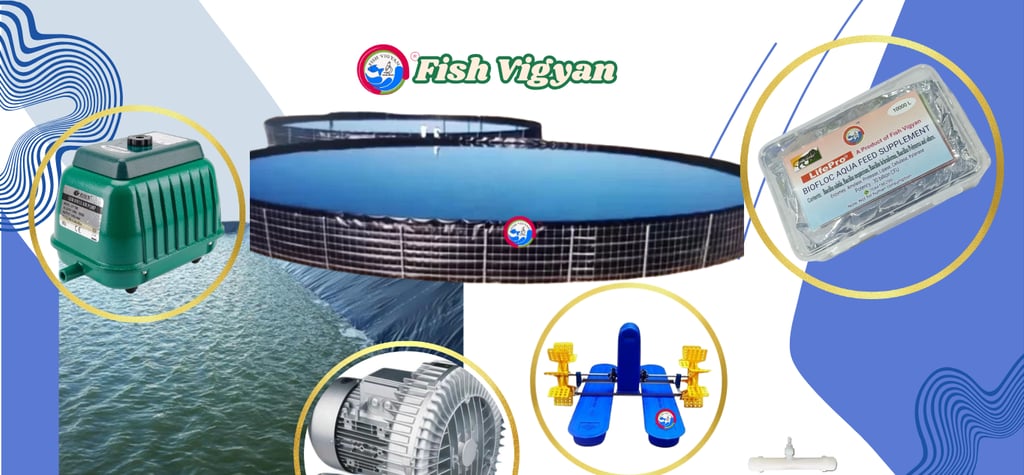

Essential Equipment for Starting a Fish Farm
Starting a fish farm can be an exciting and profitable venture, especially with the rising global demand for fresh fish. However, like any business, it requires proper planning, resources, and the right equipment. If you're considering starting a fish farming business, understanding the essential tools and equipment is crucial for setting up and running a successful operation.
This article will guide you through the essential equipment needed for fish farming, explain their purposes, and provide practical tips for selecting the right tools. Let's dive in!
1. Fish Ponds or Tanks
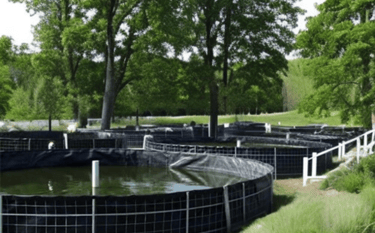

The foundation of any fish farming business is the area where fish will live and grow. Depending on the scale and type of fish farm, you may need:
Earthen Ponds: Suitable for large-scale fish farming, these are cost-effective but require more maintenance.
Concrete Tanks: Durable and suitable for intensive farming.
Plastic or Fiberglass Tanks: Lightweight and easy to install, these are ideal for small to medium-scale farming.
Cages or Pens: Used for farming fish in natural water bodies like lakes or rivers.
Tips for Choosing Ponds or Tanks:
Ensure they are the right size for your fish species and farming goals.
Consider water quality management and drainage systems.
2. Aerators
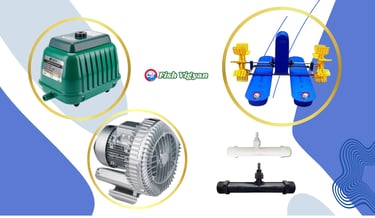

Oxygen is essential for fish survival and growth. Aerators help maintain the dissolved oxygen levels in the water, especially in intensive farming systems where overcrowding can reduce oxygen availability.
Types of Aerators:
Paddlewheel Aerators: Commonly used in larger ponds.
Air Pumps: Suitable for tanks or small ponds.
Venturi Aerators: Efficient for both ponds and tanks.
Benefits:
Prevents fish stress and mortality due to low oxygen.
Enhances growth rates and overall fish health.
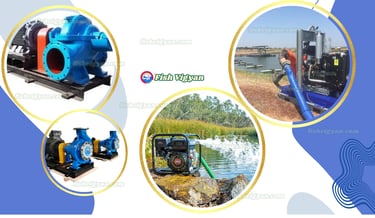

3. Water Pumps
Water pumps are critical for maintaining water quality by circulating and replacing water in the ponds or tanks. They help ensure a clean and healthy environment for the fish.
Key Considerations:
Choose a pump with adequate capacity based on the size of your farm.
Opt for energy-efficient models to reduce operational costs.
4. Water Testing Kits
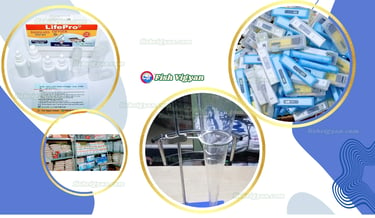

Monitoring water quality is vital for fish health and productivity. A good water testing kit allows you to measure parameters such as:
pH levels
Ammonia levels
Nitrate and nitrite levels
Dissolved oxygen
Temperature
Why It’s Important:
Poor water quality can lead to diseases and low survival rates.
Regular testing ensures early detection of problems.
5. Fish Feeders
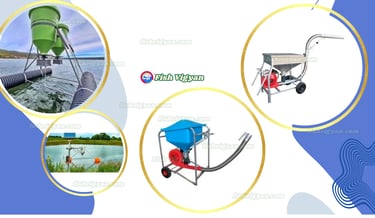

Feeding is one of the most time-consuming tasks in fish farming. Automatic fish feeders can help streamline this process while ensuring that your fish are fed the right quantity at regular intervals.
Types of Fish Feeders:
Automatic Feeders: Programmed to dispense feed at specific times.
Demand Feeders: Activated by the fish themselves, minimizing waste.
Advantages:
Saves time and labor.
Reduces feed wastage, lowering costs.
6. Nets
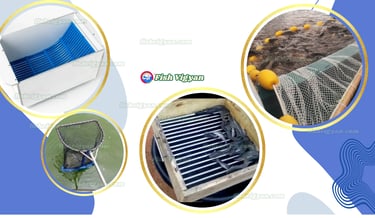

Nets are indispensable tools in fish farming. They are used for various purposes, such as transferring fish, harvesting, and separating different sizes or species.
Common Types of Nets:
Seine Nets: Used for harvesting fish.
Dip Nets: Handy for scooping out individual fish.
Grading Nets: Used for sorting fish by size.
Tip: Choose high-quality, durable nets to minimize stress or injury to the fish during handling.
7. Filters and Clarifiers
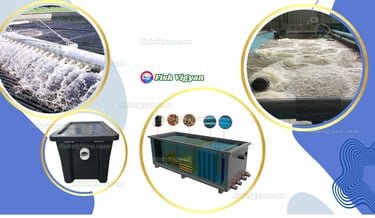

In intensive farming systems, waste and uneaten feed can accumulate, leading to poor water quality. Filters and clarifiers help remove solid waste and maintain clean water.
Types of Filters:
Mechanical Filters: Remove solid particles.
Biological Filters: Break down harmful compounds like ammonia.
Why You Need Them:
Ensures a healthy environment for fish.
Prevents the buildup of harmful toxins.
8. Lighting Systems
While natural light is sufficient for outdoor ponds, indoor tanks may require artificial lighting to simulate natural conditions.
Benefits of Proper Lighting:
Supports fish growth and development.
Enhances algae growth in some systems (for herbivorous fish).
9. Harvesting Equipment
When it's time to harvest your fish, having the right tools ensures efficiency and reduces stress on the fish. Common harvesting equipment includes:
Harvest Nets: Large nets designed for collecting fish.
Sorting Tables: For grading fish based on size or quality.
Containers: For temporarily storing harvested fish.
Pro Tip: Always handle fish gently during harvesting to avoid injuries.
10. Backup Power Supply
A reliable backup power source, such as a generator, is crucial for ensuring that your aerators, pumps, and other equipment continue functioning during power outages.
Why It’s Essential:
Prevents oxygen depletion during outages.
Avoids catastrophic losses in intensive systems.
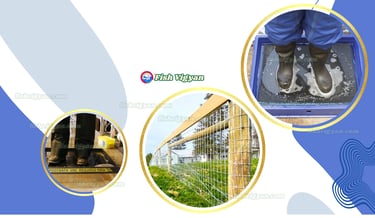

11. Biosecurity Tools
Protecting your fish from diseases is critical. Biosecurity measures include tools such as:
Foot Baths: Prevent contamination by disinfecting footwear.
Fencing: Keeps predators and unauthorized persons away.
Quarantine Tanks: Isolate new or sick fish to prevent the spread of diseases.Write your text here...
12. Cooling and Heating Systems
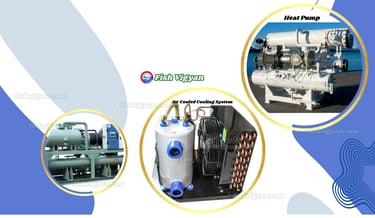

Temperature plays a significant role in fish growth and health. Depending on the fish species and farming location, you may need systems to regulate water temperature.
Examples:
Water Heaters: For cold regions or tropical fish species.
Cooling Systems: To prevent overheating in hot climates.
13. Transport Equipment
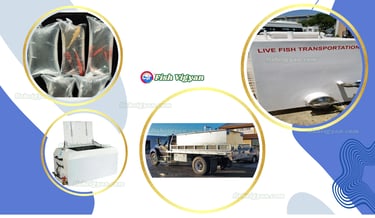

Transporting fish, whether to markets or other farms, requires specialized equipment to keep them alive and stress-free. Common tools include:
Live Fish Transport Tanks: Equipped with aeration systems.
Plastic Bags with Oxygen: For small-scale transport.
Tips for Transport:
Minimize transport time to reduce stress.
Use proper oxygenation to keep fish healthy during transit.
14. Record-Keeping Tools
Keeping detailed records is essential for tracking farm performance, fish health, and finances. Digital tools like farm management software can help streamline this process.
What to Record:
Feed usage
Growth rates
Water quality parameters
Harvest data
Expenses and revenues
15. Personal Safety Gear
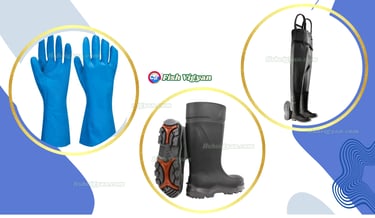

Lastly, don’t forget about your safety and that of your workers. Protective equipment like gloves, boots, and waders ensures safety during farm operations.
Final Thoughts
Starting a fish farm is a rewarding venture that requires careful planning and the right equipment. By investing in essential tools like aerators, water testing kits, and fish feeders, you can create a thriving, sustainable operation. Always remember to prioritize water quality, fish health, and biosecurity for the best results.
If you're ready to take the plunge into fish farming, Fish Vigyan is here to support you with expert consultancy, training, and high-quality equipment. Visit our website or contact us today to learn more!
By following these guidelines and equipping your fish farm with the necessary tools, you'll be well on your way to building a successful and sustainable business.
